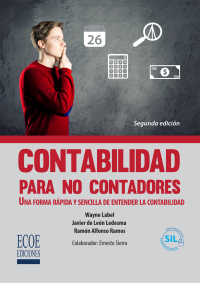1. At December 31, 2020, Chambers Co. has gross accounts receivable of $127,000. There is a $10,000 debit balance in the Allowance for Doubtful Accounts (at December 31, 2020 before adjustment). At December 31, 2020, management estimates that 15% of the gross accounts receivable will be uncollectible. The adjusting entry at December 31, 2020 will include a debit to Bad Debts Expense for: a) $10,000 b) $9,050 c) $19,050 d) $29,050 2. When an Accounts Receivable is written off using an Allowance method, the: a) Net Realizable Value (Carrying Amount) of total Accounts Receivable will increase. b) Allowance for Doubtful Accounts account will decrease. c) Allowance for Doubtful Accounts account will increase. d) Total gross Accounts Receivable will stay the same. 3. Rocco Company uses the Income Statement approach to estimate its bad debts and record the allowance related to them. At December 31, 2020, Rocco estimated bad debts to be $15,000. There is a credit balance in the Allowance for Doubtful Accounts of $950 (at December 31, 2020 before adjustment). The adjustment to the Allowance for Doubtful Accounts at December 31, 2020 will include a: a) credit for $15,000. b) credit for $15.950. c) credit for $14,050. d) no adjustment required. 4. Steinberg Co. loaned Field Co. $10,000 on February 1, 2020 accepting a 4-month, 4.5% note in return (All interest is paid at maturity). On the maturity date, Field Co. indicated that it could NOT pay at the present time but planned to pay, in the future. Steinberg Co. would make the following entry on the maturity date when the note is dishonoured: a) Accounts Receivable - Field Co. 10,000 Interest Expense 150 Notes Receivable - Field Co. 10,150 b) Accounts Receivable - Field Co. 10,150 Notes Receivable - Field Co. 10,000 Interest Revenue 150 c) Notes Receivable - Field Co. 10,000 Accounts Receivable - Field Co. 10,000 d) Accounts Receivable - Field Co. 10,000 Notes Receivable - Field Co. 10,000 5. When there is an exchange of long-lived assets, the first preference is to record the new asset at: a) fair value of the asset given up. b) fair value of the new asset. c) carrying amount of the asset given up plus any cash paid (or less any cash received). d) fair value of the asset given up plus any cash paid (or less any cash received). I 6. A patent should: a) be expensed immediately. b) be capitalized but not amortized. c) be amortized over its useful life or legal life, whichever is shorter. d) be amortized over its useful life or legal life, whichever is longer. 7. Research costs: a) are classified as intangible assets. b) must be expensed when incurred under both IFRS and ASPE c) must be grensed when incurred under FRS, capitalized as an asset under ASPE. d) must be capitalized when incurred under both IFRS and ASPE 8. For the year ended December 31, 2020, Akita Co. had net sales of $1,000,000 and a profit of $290,000 Total assets on January 1, 2020 were $1,750,000 and total assets on December 31, 2020 were $1,245,000. Akito's return on assets for 2020 was a) 66.8% b) 80.3% c) 19.496 d) 23.3% 9. Algonquin Provincial Bank agrees to lend Grimwood Brick Company $80,000 on January 1 2020. Grimwood Brick Company signs an $80,000, 9-month, 5% note (All interest paid at maturity). What adjusting entry is made by Grimwood it it prepares financial statements on June 30, 20207 a) Interest Expenso 2.000 Interest Payable 2,000 b) Interest Expense 2,000 Cash 2,000 I c) Interest Payable 2,000 Cash 2,000 d) Interest Payable 2,000 Interest Expense 2,000 10. Under ASPE, a contingent liability is recorded in the financial statements !! a) it can be reasonably estimated and unlikely to occur b) it can be reasonably estimated and likely to occur. c) it is likely to occur but cannot be reasonably estimated d) the amount of the potential loss is greater than the balance in the company's cash account










